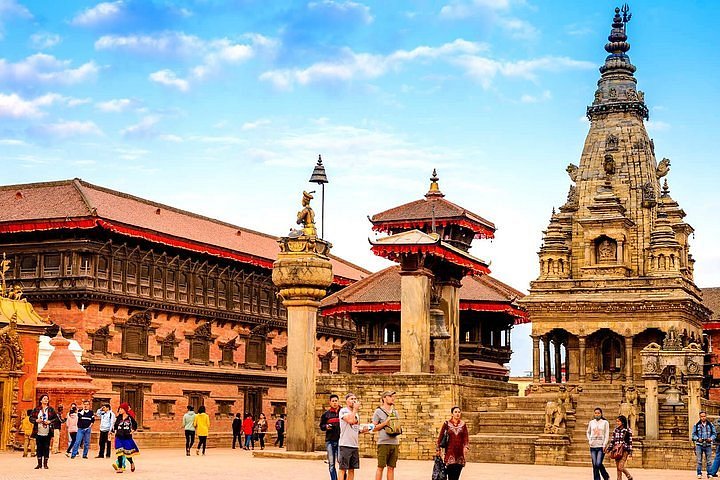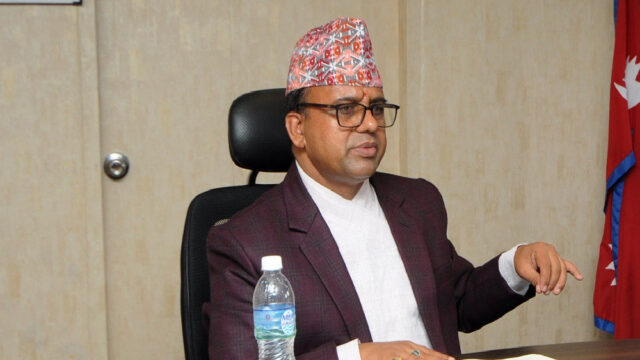Nestled in the heart of Bhaktapur, one of the ancient cities of the Kathmandu Valley, Bhaktapur Durbar Square stands as a testament to the rich cultural heritage and architectural splendor of Nepal. This historic square, a UNESCO World Heritage Site, is a living museum that showcases the exquisite craftsmanship of the Newar artisans and the grandeur of the Malla dynasty. As a focal point for tourists from around the world, Bhaktapur Durbar Square offers a unique blend of history, culture, and art that continues to captivate visitors.
Bhaktapur Durbar Square is renowned for its impressive collection of temples, palaces, courtyards, and statues, each telling a story of the city’s glorious past. The square is dominated by the 55-Window Palace, a magnificent structure that served as the royal residence of the Malla kings. Built by King Yaksha Malla in the 15th century, the palace is famous for its intricately carved wooden windows and elaborate facades. The Golden Gate, an exquisite entrance to the palace courtyard, is another highlight, adorned with mythological figures and deities.
One cannot miss the Nyatapola Temple, the tallest pagoda-style temple in Nepal, which stands as a symbol of Bhaktapur’s architectural prowess. Built-in 1702 during the reign of King Bhupatindra Malla, this five-story temple is dedicated to Siddhi Lakshmi, the goddess of prosperity. The temple’s towering structure and detailed woodwork make it a favorite spot for photographers and history enthusiasts.
Bhaktapur Durbar Square is more than just a collection of historic buildings; it is a vibrant cultural hub where traditional practices and festivals come to life. The square is the epicenter of Bhaktapur’s numerous festivals, including the Bisket Jatra, a New Year celebration marked by chariot processions, traditional music, and religious rituals. These festivals offer tourists a chance to experience the rich cultural tapestry of the city and engage with the local community.
The square is also home to several museums that provide deeper insights into Bhaktapur’s history and culture. The National Art Gallery, housed within the 55-Window Palace, features a remarkable collection of paubha scroll paintings, manuscripts, and artifacts from the Malla period. The Woodcarving Museum and the Brass and Bronze Museum showcase the craftsmanship that Bhaktapur is famous for, allowing visitors to appreciate the skill and creativity of the Newar artisans.
Tourism plays a crucial role in the economy of Bhaktapur, with Bhaktapur Durbar Square being the primary attraction. The influx of tourists has spurred the growth of local businesses, including hotels, restaurants, and souvenir shops, providing employment opportunities and contributing to the city’s revenue. The local government has implemented various measures to preserve the heritage site and enhance the visitor experience, such as maintaining cleanliness, improving infrastructure, and promoting sustainable tourism practices.
Visitors to Bhaktapur Durbar Square can enjoy a range of activities, from guided tours that delve into the history and architecture of the square to workshops where they can learn traditional crafts like pottery and woodcarving. The presence of numerous cafes and restaurants offering traditional Newari cuisine adds to the overall experience, allowing tourists to savor local flavors while soaking in the historic ambiance.
Despite its immense popularity, Bhaktapur Durbar Square faces several challenges, including the impact of natural disasters and the pressures of urbanization. The devastating earthquake of 2015 caused significant damage to many of the structures in the square, highlighting the need for ongoing preservation efforts. Restoration work, supported by both national and international organizations, has been crucial in rebuilding and conserving the historic site.
Preserving the authenticity and integrity of Bhaktapur Durbar Square requires a delicate balance between accommodating tourists and protecting the heritage. Efforts are being made to promote responsible tourism, encouraging visitors to respect the cultural and historical significance of the site. The local authorities, in collaboration with UNESCO, are also working on initiatives to raise awareness about the importance of heritage conservation among both locals and tourists.
To further enhance the visitor experience, several initiatives have been introduced in Bhaktapur Durbar Square. Information boards and guided tours provide valuable insights into the history and significance of each structure, helping visitors appreciate the rich heritage of the square. Additionally, digital technologies, such as virtual tours and interactive exhibits, are being explored to offer a more engaging and informative experience.
The introduction of cultural programs and performances in the square adds a dynamic element to the visit, allowing tourists to witness traditional dances, music, and rituals. These cultural shows not only entertain but also educate visitors about the local customs and traditions, fostering a deeper connection with the heritage site.
Bhaktapur Durbar Square remains a timeless destination that continues to enchant and inspire tourists from around the world. Its architectural grandeur, cultural vibrancy, and historical significance make it a must-visit location for anyone exploring Nepal. As efforts to preserve and promote the site continue, Bhaktapur Durbar Square stands as a shining example of how heritage tourism can contribute to the cultural and economic vitality of a community.
For travelers seeking an immersive experience in Nepal’s rich history and culture, Bhaktapur Durbar Square offers an unparalleled journey through time. Whether marveling at the intricate woodwork of the temples, participating in lively festivals, or simply strolling through the ancient courtyards, visitors are sure to leave with lasting memories of this remarkable heritage site.






